I’ve seen various social media posts and even a couple of media articles about large numbers of Red-base Jezebels Delias pasithoe in Hong Kong recently. It seems people especially notice them during cold spells, when many of these butterflies are grounded by the chill, maybe dying – though with weather warming, at least some spring to life and feed on nectar.
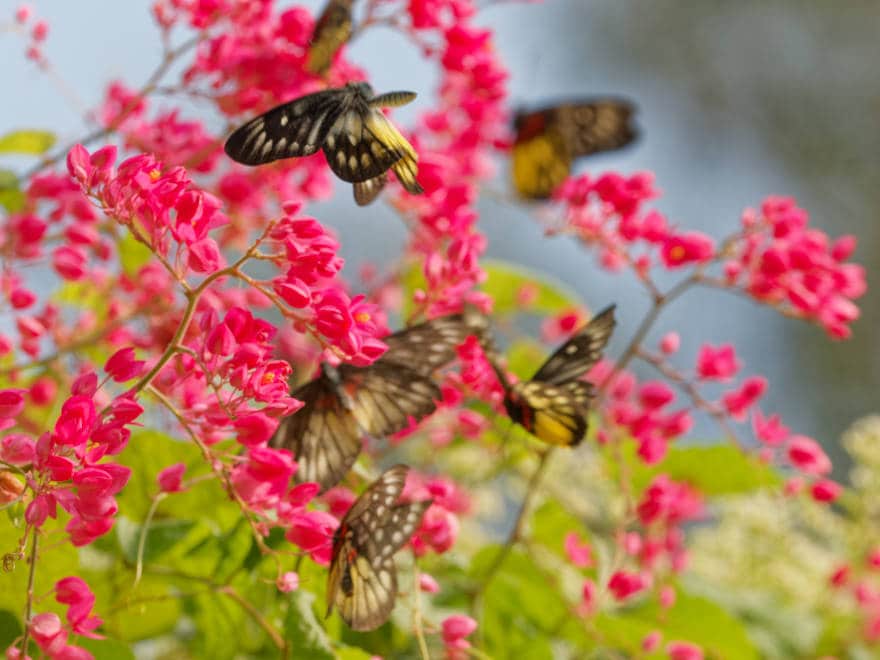
It’s odd to me that the Jezebels have only been widely noticed in recent weeks, as I noticed what looked like a huge influx underway in autumn last year – and I believe this influx and hence later numbers was related to conditions in breeding areas in China, leading to a bumper season last year. And, in turn, related to climate change.
While Red-base Jezebels can be found year-round in Hong Kong, migrants also arrive in autumn, though have previously been less noted than tigers and crows. I haven’t found much information on their migrations, though did come across a paper noting their occurrence on islands off the coast of Fujian province, se China [two similar species are mentioned; perhaps both are occurring in Hong Kong though I haven’t checked]:
In recent years, a considerable number of pierid butterflies of the genus Delias have been found from Jinmen Islands, where no available hostplants grow, rendering a proof of cross sea water migration of these butterflies. It is suggested here that these butterflies come from nearby continent of eastern China, visiting the islands for nectar acquisition in seasons when nectar is in short supply because they mostly show up in autumn months.
On mysterious occurrence of butterflies in the genus Delias at Jinmen Islands, with clarification on the nomenclature of D. pasithoe (Linnaeus, 1767) and D. acalis (Godart, 1819) in southern China
In autumn 2023, I spent several sessions watching for migrating birds of prey over Lantau and Cheung Chau. Mostly not many birds passing; but, especially in November, I did see jezebels passing south in what I figured must be considerable numbers: might see one, then another a few minutes later, and another not long after… I saw them pass over Ngong Ping – altitude over 500 metres – as well as the south Lantau coast, and over north Cheung Chau; along with taking ferry journeys and also seeing some migrating over the sea.
Some clusters of flowers also attracted multiple Jezebel butterflies to feed on nectar.
Given this influx, I figure the numbers of Jezebels seen in Hong Kong during this winter are not so much related to changes in the local situation, but result from event[s] in China. What might these be?
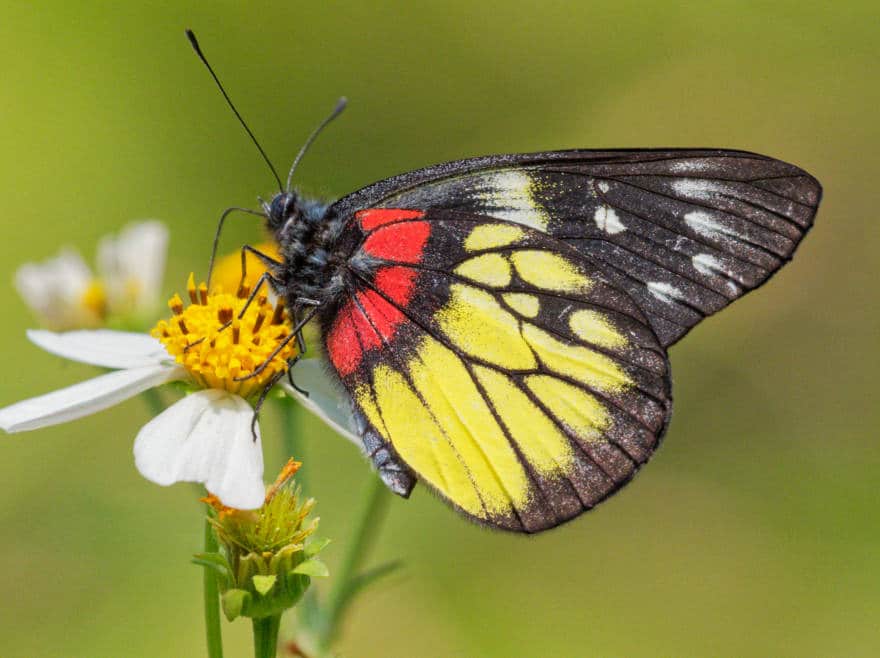
Major China Heatwave One Year, Rainstorms the Next
One highly unusual event [well, may become more usual…] was a major heatwave and drought that hit around central to east China in summer and autumn 2022. This even has its own Wikipedia entry:
To date, it is the country’s worst heat wave to have existed. According to weather historian Maximiliano Herrera, it is the most severe heat wave recorded anywhere in the world.
…
The drought and persistent heat had also caused more forest fires in China, particularly in Chongqing. Also because of the heat and lack of rain, the level of the Yangtze sharply decreased, and the Three Gorges Dam was opened in order to refill water into that river.
Poyang Lake, which is located in Jiujiang, Jiangxi, has been reduced to just 25% of its usual size due to extreme weather conditions, causing a major drought.
2022 China heat wave
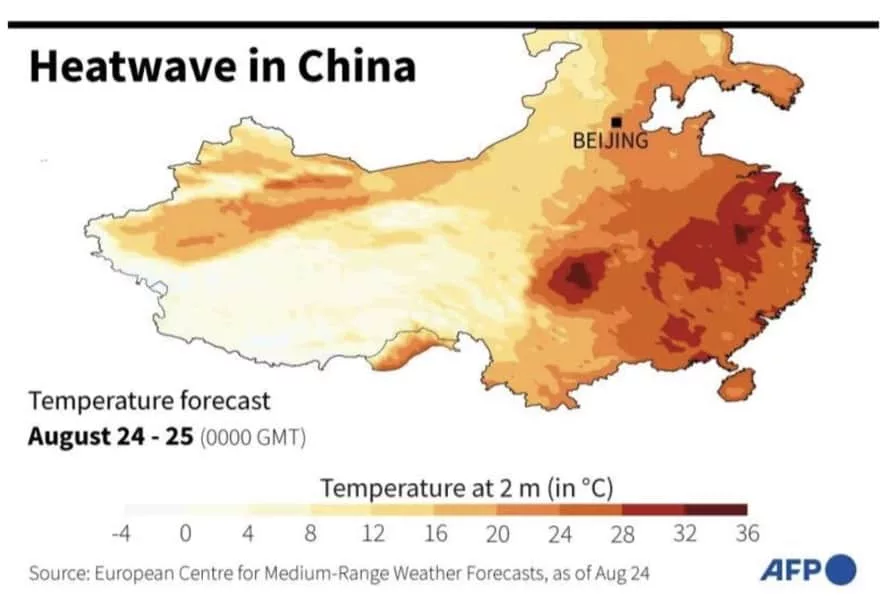
I figured this had to impact ecosystems; and believe it was the key reason for larger than usual numbers of several robin, thrush, flycatcher and other bird species occurring in Hong Kong during autumn and winter 2022. Several of these birds also arrived earlier in autumn than usual; and not during cold surges as had been typical in years past. I believe this was because they had arrived – or bred – in areas where they might normally spend at least some time, such as central-east China forests, and found very little food available, hence moved south in search of better conditions.
Last year, by contrast, there were rainstorms across much of China, especially in autumn. Again on Wikipedia:
Several floods struck China starting in July 2023, most of them caused by heavy rainfalls in different areas.
2023 China floods
Again, these rainstorms and floods will have impacted ecosystems; though sadly without information reaching Hong Kong that I know of.
I believe they led to plentiful food in central – east China forests and other habitats; and this, along with warmer than formerly normal temperatures led to a dearth of songbirds arriving in Hong Kong for the winter.
Perhaps also there were ideal conditions for a bumper breeding season for Jezebels; aided by predator numbers reduced by the previous year’s heatwave? And many of the progeny then migrated south, resulting in the Hong Kong influx.
Why, then, no remarkable numbers of tigers and crows, or other insects or even birds in Hong Kong this winter? I have mentioned this quandary – by email – to insect expert Dr Tim Bonebrake, who noted:
This winter has been reasonably good for the tigers and crows based on our numbers. Last winter was absolutely dismal – Delias [jezebel] numbers last year were also low evidently.
Greenfly and Ladybird Blizzards in UK Summer of 76
While I’ve seen reports about numbers of locusts, say, prone to “explode” as conditions change, I can’t recall something quite similar other than during Britain’s hot summer of 1976. Then, I remember a day or several at my home town of Scarborough, on the Yorkshire coast, when greenfly [aphids] suddenly appeared in “blizzards”; and a short time later were followed by hordes of ladybirds that filled the air – perhaps after their numbers boomed with numbers of greenfly to feast on.
The 1976 event is covered in Ladybird Population Explosions.
Hong Kong wildlife articles
- Jezebel butterflies seem super abundant in Hong Kong during early 2024
 I’ve seen various social media posts and even a couple of media articles about large numbers of Red-base Jezebels Delias pasithoe… Read more: Jezebel butterflies seem super abundant in Hong Kong during early 2024
I’ve seen various social media posts and even a couple of media articles about large numbers of Red-base Jezebels Delias pasithoe… Read more: Jezebel butterflies seem super abundant in Hong Kong during early 2024 - Autumn Skywatching for Birds of Prey and More in Hong Kong
 While we’ve known for some years that Grey-faced Buzzard and Chinese Sparrowhawk can pass Hong Kong in good numbers on some… Read more: Autumn Skywatching for Birds of Prey and More in Hong Kong
While we’ve known for some years that Grey-faced Buzzard and Chinese Sparrowhawk can pass Hong Kong in good numbers on some… Read more: Autumn Skywatching for Birds of Prey and More in Hong Kong - Biodiversity of Hong Kong including the Hong Kong Geopark
 Introduction: Biodiversity Depleted yet Rich Lying just south of the Tropic of Cancer, and with a sub-tropical climate – summers are… Read more: Biodiversity of Hong Kong including the Hong Kong Geopark
Introduction: Biodiversity Depleted yet Rich Lying just south of the Tropic of Cancer, and with a sub-tropical climate – summers are… Read more: Biodiversity of Hong Kong including the Hong Kong Geopark - Birds of Pui O on Lantau, Hong Kong

- Film of Mai Po Marshes – Hong Kong’s wetland superstar
 Here’s a film I made about Mai Po, using footage James Reynolds and I shot for the reserve, in English, Cantonese… Read more: Film of Mai Po Marshes – Hong Kong’s wetland superstar
Here’s a film I made about Mai Po, using footage James Reynolds and I shot for the reserve, in English, Cantonese… Read more: Film of Mai Po Marshes – Hong Kong’s wetland superstar - Where have all the Hong Kong Barn Swallows gone?
 I live on Cheung Chau, a small island in southwest Hong Kong – and became very used to it hosting many… Read more: Where have all the Hong Kong Barn Swallows gone?
I live on Cheung Chau, a small island in southwest Hong Kong – and became very used to it hosting many… Read more: Where have all the Hong Kong Barn Swallows gone? - Birdwatching in Hong Kong gives insights into wonders of nature
 While human life has lately been muted in Hong Kong during springtime, local birdlife remains vibrant, offering a chance to enjoy… Read more: Birdwatching in Hong Kong gives insights into wonders of nature
While human life has lately been muted in Hong Kong during springtime, local birdlife remains vibrant, offering a chance to enjoy… Read more: Birdwatching in Hong Kong gives insights into wonders of nature - Watching Hong Kong mammals
 With increasing reports of wild boars – including the large male dubbed “Pigzilla” on the Peak, a couple of hikers [March… Read more: Watching Hong Kong mammals
With increasing reports of wild boars – including the large male dubbed “Pigzilla” on the Peak, a couple of hikers [March… Read more: Watching Hong Kong mammals - Birds of Deep Bay including Mai Po photos

- Birding and Conservation at Fung Lok Wai Fishponds Near Mai Po
 Though Mai Po Marshes is at the heart of Hong Kong’s internationally important Deep Bay wetland, there are other important sites… Read more: Birding and Conservation at Fung Lok Wai Fishponds Near Mai Po
Though Mai Po Marshes is at the heart of Hong Kong’s internationally important Deep Bay wetland, there are other important sites… Read more: Birding and Conservation at Fung Lok Wai Fishponds Near Mai Po - Hong Kong’s first Scaly-sided Merganser
 From edge of Tai Lam Chung Reservoir in northwest New Territories, Hong Kong on 24 January 2023; trip to see what… Read more: Hong Kong’s first Scaly-sided Merganser
From edge of Tai Lam Chung Reservoir in northwest New Territories, Hong Kong on 24 January 2023; trip to see what… Read more: Hong Kong’s first Scaly-sided Merganser - Rare Turtles, Paradise Fish and Abundant Ants in Hong Kong Countryside
 Take a hike through the Hong Kong countryside and, chances are, you will enjoy some wonderful scenery – maybe rugged hills… Read more: Rare Turtles, Paradise Fish and Abundant Ants in Hong Kong Countryside
Take a hike through the Hong Kong countryside and, chances are, you will enjoy some wonderful scenery – maybe rugged hills… Read more: Rare Turtles, Paradise Fish and Abundant Ants in Hong Kong Countryside - Hong Kong is Home to a Rich Biodiversity
 A condensed story of “wild” Hong Kong, from around 18,000 years ago, at the peak of the last ice age. to the present.
A condensed story of “wild” Hong Kong, from around 18,000 years ago, at the peak of the last ice age. to the present. - Urban Birds in Hong Kong inc Ho Man Tin Hotspot
 Including the advent of a new birdwatching hotspot in the city – thanks to habitat, location, and pioneering observations by John Chow.
Including the advent of a new birdwatching hotspot in the city – thanks to habitat, location, and pioneering observations by John Chow. - Seabirds of Hong Kong: Sea Swallows, Pirates, and Ocean Wanderers
 Three species of terns nest in Hong Kong; the other seabirds are all visitors to Hong Kong waters, including a smattering of vagrants
Three species of terns nest in Hong Kong; the other seabirds are all visitors to Hong Kong waters, including a smattering of vagrants - Birds of Shui Hau on Lantau Island, Hong Kong
 Shui Hau on Lantau, Hong Kong, can be rewarding for birdlife – including a good variety of shorebirds in spring.
Shui Hau on Lantau, Hong Kong, can be rewarding for birdlife – including a good variety of shorebirds in spring. - Birds of Lion Head Mountain and Ngong Ping on Lantau, Hong Kong
 In spring 2022, thanks to birding naturalist Paul Aston, I helped discover that the hills near Ngong Ping on Lantau island… Read more: Birds of Lion Head Mountain and Ngong Ping on Lantau, Hong Kong
In spring 2022, thanks to birding naturalist Paul Aston, I helped discover that the hills near Ngong Ping on Lantau island… Read more: Birds of Lion Head Mountain and Ngong Ping on Lantau, Hong Kong - Spring Migration of Grey-faced Buzzards and Chinese Sparrowhawks in Hong Kong
 Hong Kong is usually a poor place for seeing migrating birds of prey; on many days, you might be hard-pressed to… Read more: Spring Migration of Grey-faced Buzzards and Chinese Sparrowhawks in Hong Kong
Hong Kong is usually a poor place for seeing migrating birds of prey; on many days, you might be hard-pressed to… Read more: Spring Migration of Grey-faced Buzzards and Chinese Sparrowhawks in Hong Kong - Threats and changes to Hong Kong insect populations
 While there’s no apocalypse now in Hong Kong’s insect world, threats and changes are cause for concern – including for us humans
While there’s no apocalypse now in Hong Kong’s insect world, threats and changes are cause for concern – including for us humans - Birdwatching Close to Home – in Your Hong Kong Local Patch
 Many birdwatchers have a place or two near home which they watch regularly – a place known in birdwatching terms as a “local patch”.
Many birdwatchers have a place or two near home which they watch regularly – a place known in birdwatching terms as a “local patch”. - Era of the Pig – Boom Times for Hong Kong’s Wild Boar
 Several factors have led to a marked increase in the numbers of wild boars seen on the city fringes, and even in some urban areas.
Several factors have led to a marked increase in the numbers of wild boars seen on the city fringes, and even in some urban areas. - Spectacular Swallowtails, Flying Tigers and Archdukes Arriving – Hong Kong Butterflies
 Hong Kong is home to 23 species of swallowtails, among an impressive tally of around 245 butterfly species, and watching and photographing these and other eyecatching butterflies can readily enhance outdoor outings.
Hong Kong is home to 23 species of swallowtails, among an impressive tally of around 245 butterfly species, and watching and photographing these and other eyecatching butterflies can readily enhance outdoor outings. - Hong Kong’s Enigmatic Porpoises: Finless, and Almost Friendless
 Growing to just 1.8 metres in length, finless porpoises are shy, and hard to see even in their home ranges within southern Hong Kong waters.
Growing to just 1.8 metres in length, finless porpoises are shy, and hard to see even in their home ranges within southern Hong Kong waters. - Endangered Hong Kong Birds, on Flights to Oblivion
 Like canaries in a coal mine, endangered species are signs of danger facing planet earth, our life support system Perhaps for… Read more: Endangered Hong Kong Birds, on Flights to Oblivion
Like canaries in a coal mine, endangered species are signs of danger facing planet earth, our life support system Perhaps for… Read more: Endangered Hong Kong Birds, on Flights to Oblivion - Death in Stanley – Hong Kong’s Last South China Tiger
 Hong Kong’s last tiger was shot in Stanley, in 1942; prior to which this now extinct sub-species had become an occasional visitor to the territory.
Hong Kong’s last tiger was shot in Stanley, in 1942; prior to which this now extinct sub-species had become an occasional visitor to the territory. - Hong Kong’s Magnificent Six Wildlife Species – Ambassadors for the Wild
 Set on the coast of sub-tropical south China, Hong Kong is home to a wealth of wildlife, which is all the… Read more: Hong Kong’s Magnificent Six Wildlife Species – Ambassadors for the Wild
Set on the coast of sub-tropical south China, Hong Kong is home to a wealth of wildlife, which is all the… Read more: Hong Kong’s Magnificent Six Wildlife Species – Ambassadors for the Wild - HK Wildlife Photos by Martin Williams

- Red Tides n Sea Sparkle n the Mad Megalopolis
 The end of November 2014 saw areas of inshore waters across Hong Kong and east Shenzhen turn improbably colourful thanks to… Read more: Red Tides n Sea Sparkle n the Mad Megalopolis
The end of November 2014 saw areas of inshore waters across Hong Kong and east Shenzhen turn improbably colourful thanks to… Read more: Red Tides n Sea Sparkle n the Mad Megalopolis - Birding in Hong Kong’s Deep Bay During Spring

Deep Bay in northwest Hong Kong is a wetland of international importance, a magnet for migratory waterbirds.
- Birdwatching in Hong Kong is a great pastime
 You don’t need much equipment to start birdwatching. A pair of binoculars and a field guide will get you started on… Read more: Birdwatching in Hong Kong is a great pastime
You don’t need much equipment to start birdwatching. A pair of binoculars and a field guide will get you started on… Read more: Birdwatching in Hong Kong is a great pastime - Hong Kong’s Mysterious Migratory Butterflies
 On 31 December 2011, researchers trapping butterflies at Deep Water Bay on Hong Kong Island found a Chestnut Tiger with writing on… Read more: Hong Kong’s Mysterious Migratory Butterflies
On 31 December 2011, researchers trapping butterflies at Deep Water Bay on Hong Kong Island found a Chestnut Tiger with writing on… Read more: Hong Kong’s Mysterious Migratory Butterflies - Deadliest Hong Kong Animals
 A quick look at animals with venom, killer teeth and blades. Table of Contents Giant Centipede Blue-ringed Octopus Bamboo Snake Domestic… Read more: Deadliest Hong Kong Animals
A quick look at animals with venom, killer teeth and blades. Table of Contents Giant Centipede Blue-ringed Octopus Bamboo Snake Domestic… Read more: Deadliest Hong Kong Animals - Watching and Photographing Black Kites in Hong Kong

 Black Kites are among the territory’s most familiar birds.
Black Kites are among the territory’s most familiar birds. - Mai Po Marshes Nature Reserve – including bird flocks and global rarities

 At Mai Po Marshes Nature Reserve you can enjoy impressive wildlife spectacles.
At Mai Po Marshes Nature Reserve you can enjoy impressive wildlife spectacles. - Dangerous Snakes in Hong KongA review of the DANGEROUS SNAKES in Hong Kong.
- Lantau feral cattle and water buffalo
 They might seem odd “wildlife”, yet Lantau’s cattle and water buffalo now roam free, and are part of the ecosystem.
They might seem odd “wildlife”, yet Lantau’s cattle and water buffalo now roam free, and are part of the ecosystem. - Rat Snakes wrestlingOn Cheung Chau one afternoon, saw two big Rat Snakes wrestling. Also known as a “dance”, this is combat between two… Read more: Rat Snakes wrestling
- Top Ten Hong Kong birds
 Here’s a definitive list of the top ten Hong Kong birds.(Well, ok, this is subjective; but ten top species for sure.)… Read more: Top Ten Hong Kong birds
Here’s a definitive list of the top ten Hong Kong birds.(Well, ok, this is subjective; but ten top species for sure.)… Read more: Top Ten Hong Kong birds - No Bird Flu Just Enjoyable Visit to Mai Po

Despite all the brouhaha, there is no H5N1 at Mai Po.
- Beginning birdwatching in Hong Kong
 Hong Kong is an excellent place for birdwatching. Here, you can find global rarities that are tough to see elsewhere, encounter… Read more: Beginning birdwatching in Hong Kong
Hong Kong is an excellent place for birdwatching. Here, you can find global rarities that are tough to see elsewhere, encounter… Read more: Beginning birdwatching in Hong Kong - Hong Kong’s Regenerating Forests and Forest Wildlife
 Though there are places where wildlife is on the rebound, none is any more than a shadow of Hong Kong’s forests past.
Though there are places where wildlife is on the rebound, none is any more than a shadow of Hong Kong’s forests past. - Hong Kong Sharks
 Hong Kong once had a shark fishery indicating at least they were at one stage abundant, and why perhaps they are now locally extinct.
Hong Kong once had a shark fishery indicating at least they were at one stage abundant, and why perhaps they are now locally extinct. - Mai Po birding, Hong Kong

 Mai Po Marshes Nature Reserve is a key part of the internationally important Deep Bay wetland
Mai Po Marshes Nature Reserve is a key part of the internationally important Deep Bay wetland - Hong Kong birding sites

 There are many good birdwatching locations throughout Hong Kong.
There are many good birdwatching locations throughout Hong Kong.

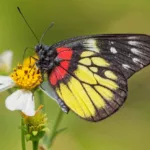
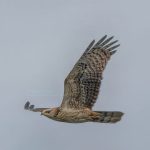
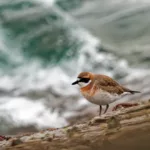
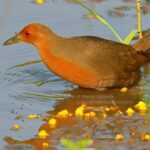

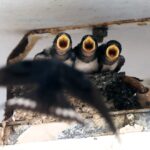
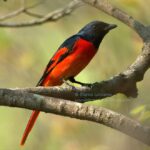
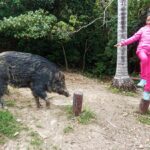
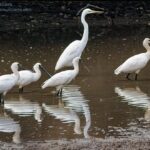
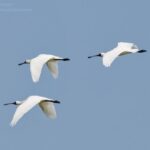
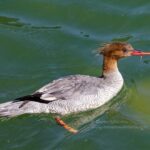
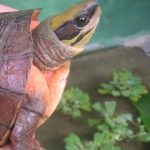
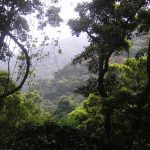
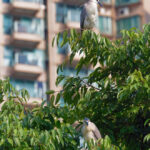
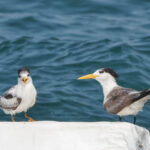
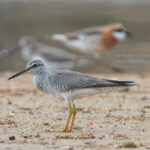
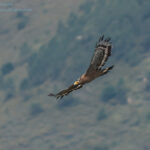
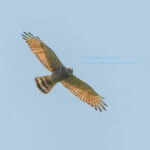
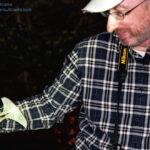
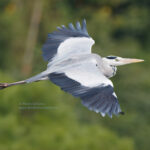
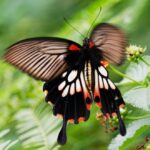
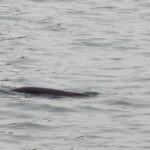
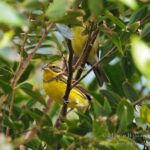

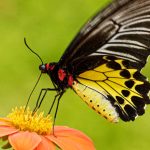
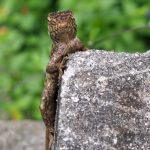

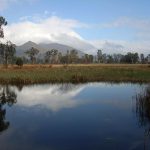
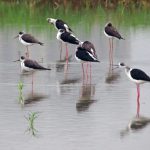
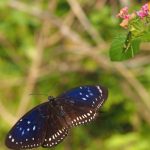
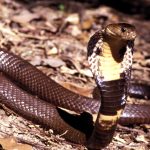

 Black Kites are among the territory’s most familiar birds.
Black Kites are among the territory’s most familiar birds.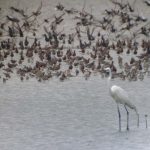
 At Mai Po Marshes Nature Reserve you can enjoy impressive wildlife spectacles.
At Mai Po Marshes Nature Reserve you can enjoy impressive wildlife spectacles.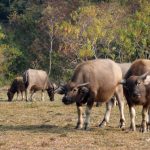
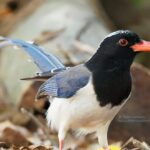
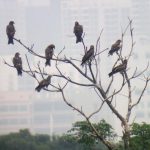
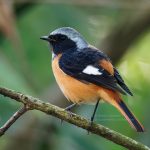
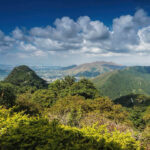

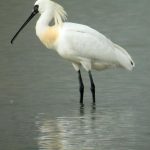
 Mai Po Marshes Nature Reserve is a key part of the internationally important Deep Bay wetland
Mai Po Marshes Nature Reserve is a key part of the internationally important Deep Bay wetland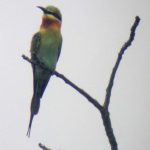
 There are many good birdwatching locations throughout Hong Kong.
There are many good birdwatching locations throughout Hong Kong.